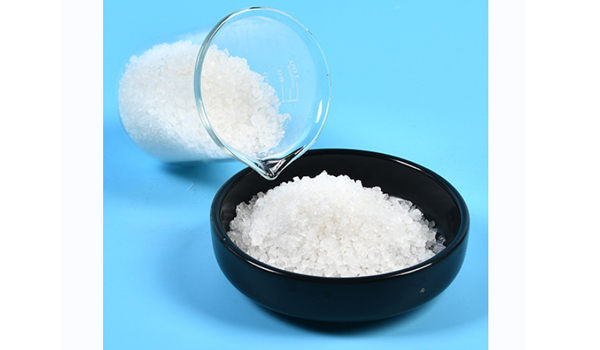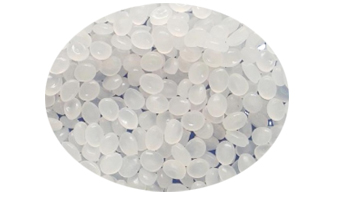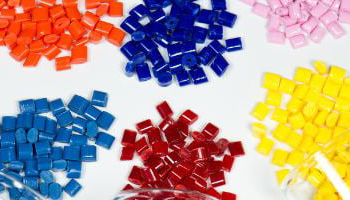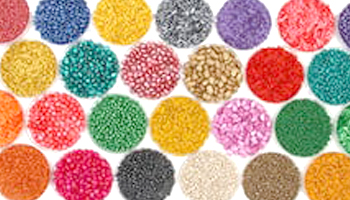Find best Polymer Suppliers for all your bulk order needs
We connect buyers to top Polymer Suppliers, helping both find the right match for their needs.

Polymer
Explore Polymer related category & post requirement to connect with Polymer related suppliers for your bulk order needs and get the best deal on high-quality Polymer related products at wholesale price.
Polymer:
Polymer is a class of natural or synthetic substances that is composed of macromolecules which are multiples of monomers called simpler chemical units.
Some facts about Polymer:
- Many of the materials in living organisms are composed of Polymers including proteins, cellulose, and nucleic acids.
- Polymer are the base of many minerals such as as quartz, diamond, and feldspar as well as man-made materials such as as glass, paper, plastics, concrete, and rubbers.
- Polymer can be classified as an unspecified number of monomer units.
- Sometimes, it is called a high polymer when the number of monomers is very large.
- Although most of the polymers are natural and synthetic, some are made up of two or more different types of monomers. Some natural polymers are composed of only one type of monomer.
- Polymers are available in the form of synthetic plastics such as polystyrene, natural biopolymers such as DNA and proteins that are basics of biological structure and function.
- Both natural and synthetic polymer are created through polymerization of many small molecules, known as monomers.
- A unique physical properties including toughness, high elasticity, viscoelasticity, and a tendency can be produced by their consequently large molecular mass, relative to small molecule compounds to form amorphous and semicrystalline structures rather than crystals.
Types of Polymer:
Naturally occurring and synthetic or man made are two types of polymer.
Natural Polymers:
- Natural Polymers can be either organic or inorganic.
- Organic polymers provide basic structural materials and play a crucial role in living things by participating in vital life processes.
- The solid parts of all plants are made up of polymers which include cellulose, lignin, and various resins.
- Cellulose is a variety of other natural polymers which is the main constituent of wood and paper.
- Cellulose is a polysaccharide, which is a polymer that is composed of sugar molecules.
- Lignin composed of a three-dimensional network of polymers which is complicated and wood resins are isoprene which are polymers of a simple hydrocarbon.
- Rubber is another familiar isoprene polymer.
- Proteins are polymers of amino acids, and the nucleic acids which are other important natural polymers. These are polymers of nucleotides composed of sugars, nitrogen containing bases, and phosphoric acid and are complex molecules.
- Genetic information is carried by nucleic acids in the cell.
- Starches are natural polymers composed of glucose which are important sources of food energy derived from plants.
- Many inorganic polymers such as diamond and graphite are also found in nature.
- Both of inorganic polymers are composed of carbon.
- Diamond composed of a three-dimensional network of carbon atoms that gives its hardness.
- The carbon atoms are used as a lubricant in graphite.
- Hemp, shellac, amber, wool, silk, and natural rubber are some examples of Natural polymeric materials.
Synthetic polymers:
- Synthetic polymers can be produced in different types of reactions.
- Polypropylene, polystyrene, polyethylene, polyvinyl chloride, synthetic rubber, phenol formaldehyde resin or Bakelite, nylon, neoprene, polyacrylonitrile, PVB, and silicone are some of the Synthetic polymers.
- Simple hydrocarbons, such as propylene and ethylene can be transformed into polymers by adding monomer one by one to the growing chain.
- Polyethylene is an addition polymer that is composed of repeating ethylene monomers. It may consist of 10,000 monomers joined in long coiled chains.
- Polyethylene is translucent, crystalline and thermoplastic.
- It can be used for coatings, packaging, molded parts, and the manufacture of bottles and containers as it softens when heated.
- Polypropylene may consist of from 50,000 to 200,000 monomers and is also crystalline and thermoplastic but is harder than polyethylene.
- Polypropylene can be used in the textile industry and to make molded objects.
- Polybutadiene, polyisoprene, and polychloroprene, are other addition polymers which are all important in the manufacture of synthetic rubbers.
- Some polymers, such as polystyrene, are thermoplastic and are glassy as well as transparent at room temperature.
- Polystyrene can be used in the manufacture of toys and other plastic objects as it can be colored any shade.
- Vinyl chloride is produced when one hydrogen atom is replaced by a chlorine atom in ethylene.
- Vinyl chloride polymerizes to polyvinyl chloride (PVC) that can be manufactured in a number of forms, including foams, films, and fibers. It is a colorless, hard, tough, thermoplastic material.
- Vinyl acetate can be produced by the reaction of ethylene and acetic acid.
- Vinyl acetate polymerizes to amorphous, which is a soft resins used as coatings and adhesives.
- A large family of thermoplastic materials can be produced when Vinyl acetate copolymerizes with vinyl chloride.
- Polymers may contain oxygen or nitrogen atoms, along with carbon atoms in the backbone chain.
- Polyacetals are among such macromolecular materials with oxygen atoms.
- The simplest polyacetal is Polyformaldehyde which is crystalline and resistant to abrasion and the action of solvents and has a high melting point.
- Acetal resins are used in the manufacture of machine parts such as gears and bearings as these are more like metals than are any other plastics.
- Polyester is a linear polymer that are characterized by a repetition of ester groups along the backbone chain.
- Open-chain polyesters are thermoplastic materials which are colorless, and crystalline.
- Polyesters with high molecular weights can be used in the manufacture of films, molded objects, and fibers such as Dacron.
- The naturally occurring proteins casein are polyamides, that are found in milk, and zein.
- Plastics, fibers, adhesives, and coatings can be made from these compounds.
- Urea-formaldehyde resins are among the synthetic polyamides, which are thermosetting.
- These can be used as adhesives and coatings for textiles and paper as well as to produce molded objects.
- Polyamide resins known as nylons are strong, resistant to heat and abrasion, noncombustible, and nontoxic.
- They can be used as textile fibers as they can be colored. However, they can also be used in many other applications.
- Linear repetitions of the urethane group is another important family of synthetic organic polymers.
- Polyurethanes can be used in making elastomeric fibers known as spandex and also in the production of coating bases and soft and rigid foams.
- The mixed organic-inorganic compounds are different class of polymers.
- Silicones are the most important representatives of this polymer family which consists of alternating silicon and oxygen atoms with organic groups attached to each of the silicon atoms.
- Oils and greases are silicones with low molecular weight.
- Versatile elastic materials are higher-molecular-weight species of silicone that remain soft and rubbery at very low temperatures as well as relatively stable at high temperatures.
- Fluoropolymers, are fluorocarbon containing polymers which are made up of carbon and fluorine bonds. These are highly stable and render the compound resistant to solvents.
- A nonstick quality to fluoropolymers is further imparted by the nature of carbon and fluorine bonding which is most widely evident in the polytetrafluoroethylene (PFTE) Teflon.
Polymer chemistry:
- Polymers can be designed and synthesized that vary in hardness, flexibility, softening temperature, solubility in water, and biodegradability.
- Polymeric materials can be produced that are as strong as steel yet lighter and more resistant to corrosion.
- Plastic pipe such as oil, natural gas, and water pipelines can be constructed.
- Plastic components can be used by automakers to build lighter vehicles that consume less fuel.
- Textiles, rubber, paper, and packaging materials are also built upon polymer chemistry.
- Special catalysts are also developed that are required by the large-scale industrial synthesis of commercial polymers.
Properties of Polymer:
- The properties of Polymer depends on their structure and they are divided into classes according to their physical basis.
- The way a polymer behaves as a continuous macroscopic material is described by many physical and chemical properties.
- Mechanical properties:
- Mechanical properties are the properties that tells how the polymer actually behaves on a macroscopic scale.
- The tensile strength of a material defines how much elongating stress the material will go through before failure which is very important in applications that rely upon the physical strength or durability of a polymer.
- Generally, tensile strength of a polymer increases with polymer chain length and crosslinking of polymer chains.
- Young's modulus defines the elasticity of the polymer. It is defined as the ratio of rate of change of stress to strain for small strains. It is strongly dependent on temperature
- Viscoelasticity is described by a complex time dependent elastic response, which will show hysteresis in the stress-strain curve when the load is removed.
- This complex modulus is measured by Dynamic mechanical analysis or DMA by oscillating the load and measuring the resulting strain as a function of time.
- Transport properties such as diffusivity is how rapidly molecules move through the polymer matrix which are very important in many applications of polymers for films and membranes.
- Reptation is a process of the movement of individual macromolecules in which each chain molecule is constrained by entanglements with neighboring chains to move within a virtual tube.
- Polymer molecule dynamics and viscoelasticity can be explained by the theory of reptation.
- Polymers may be either semi-crystalline or amorphous depending on their chemical structures.
- All polymers including amorphous and semi-crystalline go through glass transitions.
- The glass-transition temperature (Tg) is an important physical parameter for polymer manufacturing, processing, and use.
- The degree of branching or crosslinking in the polymer can be altered or plasticizers can be added to produce the glass-transition temperature.
- Molecular motions are frozen and polymers are brittle and glassy below glass-transition temperature where as molecular motions are activated and polymers are rubbery and viscous above the glass-transition temperature.
- The features of second-order phase transitions such as discontinuity in the heat capacity is shared by the glass transition.
- Polymeric mixtures are less miscible than mixtures of small molecule materials as the driving force for mixing is usually entropy, not interaction energy.
- Free energy associated with increasing the amount of volume available to each component as miscible materials usually form a solution because of an increase in entropy
- The glass-transition temperature decreases and polymer flexibility increases because of Inclusion of plasticizers.
- Dependence of the glass-transition temperature Tg on the cooling rate can also be modified by addition of the plasticizer.
- The mobility of the chain can further change if the molecules of plasticizer give rise to formation of hydrogen bonding.
- Generally, these are small molecules that are chemically similar to the polymer and create gaps between polymer chains for greater mobility and fewer interchain interactions.
- The properties of polymer can be determined by the attractive forces between polymer chains.
- They have many such interchain interactions per molecule as polymer chains are so long.
- The polymer can have ionic bonding or hydrogen bonding between its own chains with different side groups on the polymer resulting in higher tensile strength and higher crystalline melting points.
- Polymers such as PMMA and HEMA:MMA, also known as solid-state dye-doped polymer lasers are used as matrices in the gain medium of solid-state dye lasers,
- The laser properties are dominated by the laser dye used to dope the polymer matrix as these polymers have a high surface quality and are also highly transparent
- Very narrow linewidths can be produced by the class of organic lasers which is useful for spectroscopy and analytical applications.
Applications of Polymer:
- Synthetic polymers are used in most of the applications now a days because of their unique properties: low density, low cost, good thermal/electrical insulation properties, high resistance to corrosion, low-energy demanding for manufacturing of polymer and easy processing into final products.
- The properties of a polymer can be enhanced or modified by combining it with other materials for a given application.
- Polymeres are used in clothing, sportswear and accessories as polyester and PVC clothing, sport shoes, wetsuits, spandex, footballs and billiard balls, skis and snowboards, rackets, parachutes, sails, tents and shelters.
- In electronic and photonic technologies, they are used as organic field effect transistors (OFET), light emitting diodes (OLED) and solar cells, television components, compact discs (CD), photoresists, and holography.
- Polymers are used as films, bottles, food packaging, and barrels in packaging and containers.
- In insulation, they are used as electrical and thermal insulation, spray foams.
- Polymers are used in construction and structural applications such as garden furniture, PVC windows, flooring, sealing, pipes.
- They can be used as paints, glues and lubricants such as varnish, adhesives, dispersants, anti-graffiti coatings, antifouling coatings, non-stick surfaces, and lubricants.
- Car parts such as tires, bumpers, windshields, windscreen wipers, fuel tanks, car seats can be made of polymer.
- Household items such as buckets, kitchenware, toys; Medical applications such as blood bag, syringes, rubber gloves, surgical suture, contact lenses, prosthesis, controlled drug delivery and release, matrices for cell growth; Personal hygiene and healthcare such as toothbrushes, cosmetics, shampoo, condoms can be made of polymers. Superabsorbent polymers are used in diapers.
- Polymers can be used in the manufacturing of security items such as personal protective equipment, bulletproof vests, space suits, ropes.
- Separation technologies such as synthetic membranes, fuel cell membranes, filtration, ion-exchange resins uses ploymer.
- Polymer banknotes and payment cards are also available.
- These are also used in 3D printing.
A polymer is a big molecule made up of multiple subunits that is one of the most widely utilised materials on the planet. Chemical resistance and electrical and thermal insulation are two properties of polymers. Textile, toy, stationary, package construction, and other sectors use these materials. In India, you can become a distributor and wholesale supplier of polymer, biodegradable polymers, natural polymers, synthetic polymers, biopolymers, thermoplastic polymer, linear polymer, polymer products, and other polymer-related items. Submit an inquiry to become a well-known Polymers distributor.


